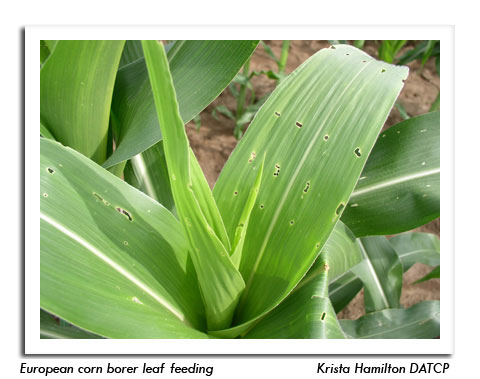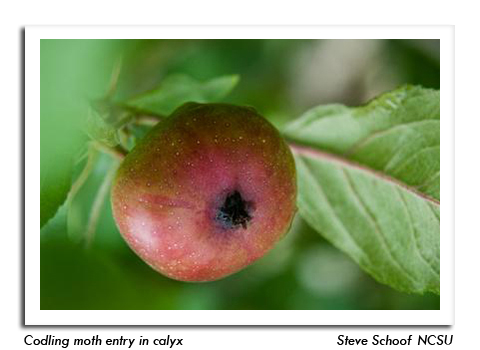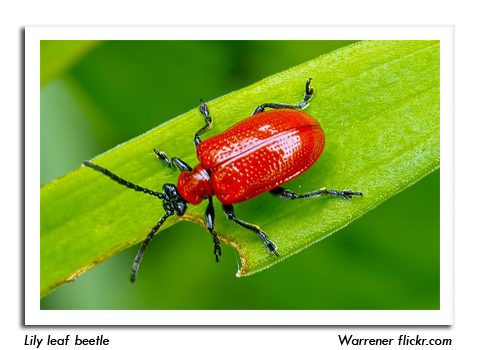
 |
|
|
Looking Ahead
Volume 63 Number 7 Date 06/14/2018 SPOTTED WING DROSOPHILA - The first reported female SWD fly of the season was captured in UW monitoring traps between May 17 and June 1. The very early appearance of SWD adults should be viewed as a warning to fruit growers to increase monitoring efforts since fly population typically surge within three weeks following initial trap captures. EUROPEAN CORN BORER - The treatment window for first-generation larvae has opened in advanced southern locations. Close inspection of susceptible corn and Bt refuge areas is advised during the next two weeks to determine the percentage of whorls infested with small larvae. Conventional or organic treatments directed against the early-instar stages must be applied before the caterpillars begin boring into corn stalks and midribs, around 1,100 degree days (modified base 50°F). Larvae are susceptible to chemical control for only 7-10 days after egg hatch. CODLING MOTH - Most southern and central Wisconsin apple orchards are 300-450 degree days (modified base 50°F) beyond the spring biofix, and treatments for first-generation larvae have been made. Reapplication of CM insecticides may be necessary if heavy rainfall of two or more inches is received and trap counts are consistently above five moths per trap per week, or following a brief intense rain event (½-1 inch). Scouting fruits for tiny, circular entry wounds should start next week. POTATO LEAFHOPPER - Nymphs will likely begin appearing in alfalfa in the week ahead. Counts of this stage and the adults are well below the economic threshold of one per sweep in 8- to 11-inch fields and two per sweep for alfalfa 12 inches or taller, though reproduction could increase rapidly in response to hot mid-June weather. Routine sampling of second-crop alfalfa is recommended. APPLE MAGGOT - Fly emergence could start by June 24 near Beloit, June 29 near La Crosse, and July 9 near Racine. This event corresponds with the accumulation of 900 degree days (base 50°F). Traps can be placed next week in perimeter trees adjacent to abandoned orchards or woodlots to capture the earliest emerging flies. LILY LEAF BEETLE - This newly-established invasive beetle was reported this week by the Portage County Horticulture Assistant at four separate locations in the Stevens Point-Plover area. Portage County is currently the southernmost Wisconsin county in which the lily leaf beetle is known to be occur. The northernmost record of the beetle is from Merrill in Lincoln County. Lily leaf beetle was first discovered in the state in 2014 near Kronenwetter and Mosinee in Marathon County. Recommended controls include manually picking the adults and larvae from lilies or applying an insecticide labeled for use on ornamental plants. More than one application may be needed. -- Krista Hamilton, DATCP Entomologist 





|
|
|